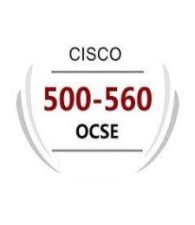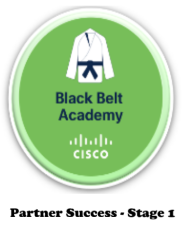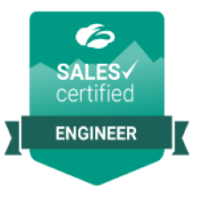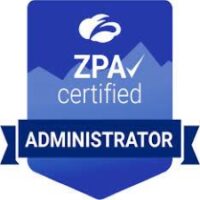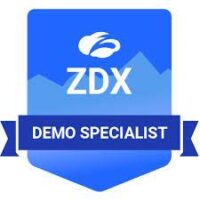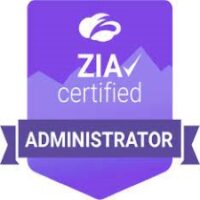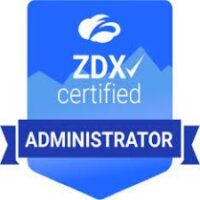While data protection is all the rage, it’s important to understand one key aspect of it: DLP. Short for data loss prevention, this often gets confused with the broader concept of data protection as a whole. When discussing data protection, most focus on a platform built and integrated to secure data everywhere. When talking of DLP, the focus is on the underlying technology that finds and classifies data files as sensitive or not. It’s an important distinction, with the key factor being that DLP is a core building block of a larger data protection platform. Why is DLP as a technology so important? With the average cost of a data breach having been $4.88 million in 2024 (IBM), the stakes have never been higher when it comes to protecting data. What’s more, not all data breaches come externally. Protecting your data from users within our own network is just as important as over 60% of data breaches are caused by insider threats or accidental exposure (Verizon DBIR).With that said, let’s dive into all things DLP, from strategies to best practices. What Is Data Loss Prevention (DLP)?Data loss prevention is a set of strategies, tools, and practices designed to detect, monitor, and protect sensitive data from unauthorized access, misuse, or accidental exposure. It classifies and safeguards confidential information—such as financial records, intellectual property, or personal data—by ensuring it remains secure both within and outside an organization. DLP helps you classify data as sensitive or not sensitive. If you had to find and catalog all your data by hand across your organization, you’d have an impossible job. DLP uses a combination of dictionaries and engines to quickly identify if a piece of data has names and addresses (PII), or credit card numbers (PCI), or medical information (HIPAA). Most DLP engines will come with tons of predefined dictionaries that focus on all the most common types of sensitive data categories. Since these engines use regular expression (regex) signatures and are customizable, many organizations can iterate on these dictionaries to make additional new custom dictionaries that can identify pretty much any type of customer data needed. As it happens, we’re also starting to see the introduction of AI into this classification process. Faster and often more accurate than DLP regex signatures, AI- and ML-based models can quickly find the same data faster and with less administrative setup or DLP expertise.An important aspect of DLP is where it is deployed—typically, this is done where the data is. Commonly data is in use on the endpoint, in motion leaving an organization, and at rest within a cloud. For this reason, many organizations have embraced endpoint DLP, network DLP, and CASB (which has a DLP engine). Having said that, having three point products for these areas is not recommended, as it raises all kinds of challenges, which we’ll talk about in the Key Components section. What Is Driving DLP Adoption?There are three primary driving factors for DLP adoption. The first (and scariest) is the increasing efficacy of external forces and adversaries targeting your data. When this type of data loss happens, the impact can be catastrophic. Ransomware and other targeted malware, for example, can scoop up massive amounts of data outside the organization and expose it publicly. Most ransomware now focuses on double extortion, which not only encrypts data, but exfiltrates it as well..Insider threats are the second factor, and while they often cause smaller, bite-sized incidents, they can be just as damaging. Since your users are primarily working with your data, it stands to reason that they have lots of opportunities to accidentally put data in harm’s way. They want to get their job done, but they may not realize that the sensitive data they are emailing or sharing in a link shouldn’t leave the company. According to Verizon’s DBIR, 34% of data breaches involve internal actors. The third driver for DLP is compliance. This is crucial if you are in an industry that requires adherence to regulations for sensitive data. The regulations aren’t there to make your life difficult—rather, they ensure that you’re thinking carefully about the sensitive data you have. Maintaining compliance seems like a lot of work, but the cost of not doing so is often more painful. According to the Ponemon institute, non-compliance is 2.7x as expensive as compliance itself.In the next section, we’ll cover what makes a proper DLP program.Key Components of a Robust DLP StrategyWhat do you need to build a robust protection strategy for data loss prevention? It starts with architecture, but mixes in a healthy dose of innovation.Many organizations have historically used point products to implement DLP. From endpoint DLP to network DLP to CASB/DLP, organizations tend to pivot from one problem solving approach to another. This presents challenges as data moves through your organization, potentially leaving you with three different DLP engines detecting the same data in different ways. How do you respond to an incident if you don’t know which detection is correct? Consider also having to create a custom DLP rule for a piece of data. In order to do so, you’d need to touch multiple DLP policies, potentially including additional channels that use DLP such as data security posture management or browser isolation. Adding these channels individually only serves to introduce more complexity, and thus, more headaches for you and your teams.For this reason, Gartner has depreciated the DLP Magic Quadrant and moved data protection over to Security Service Edge (SSE), which consolidates services around an inline SSL proxy. This is now the industry-recognized standard from where data protection should be consumed. The advantage SSE provides is in that it centralizes DLP inspection and policy, therefore allowing for consistent alerting across all channels. Via an endpoint agent and an API accessing clouds, you can expertly inspect devices, networks, and clouds with one DLP platform. You get consistent alerting, unified policy creation, unlimited SSL inspection, and added flexibility to easily add channels as you grow.When seeking out an SSE platform, you must also ensure that it supports most data loss channels, so that your data protection platform may grow with you.. We’ve already talked about endpoint, inline, and CASB, but it’s important to use the same DLP to secure email, BYOD, public, and private clouds as well.Best Practices for Effective DLP ImplementationHere are a few best practices that can help you along your data protection journey. Focus on AI: According to Gartner, 56% of companies plan to integrate AI into their DLP systems by 2025. The power of AI is undeniable, which is why AI should be in your future plans as both a security accelerator and a productivity tool for users. Solutions like Zscaler’s can enable far faster data discovery with AI-powered classification. Additionally, robust controls around GenAI applications give you granular control and visibility over what data should be placed in a GenAI platform. Deliver user coaching: Many data protection programs fail because of a lack of adequate focus on user training. If users aren’t bought into your data protection program, or are unaware of their risky actions, the data protection program can’t grow. With Zscaler Workflow Automation, you can assign incidents to users for justification. Making users aware of the incident they created will help them understand risks and learn which data should be treated carefully. Maintain a strong posture: Delivering great data hygiene requires that you understand the impact posture has on your SaaS and public clouds. Many cloud breaches are due to misconfigurations that allow adversaries to walk right and steal data. Additionally, DevOps professionals that often set up cloud instances are not security experts, which compounds the problem. With SaaS Security Posture Management (SSPM) and Data Security Posture Management (DSPM) from Zscaler, organizations can continuously monitor these platforms for exposure and close them. When these approaches are integrated into a security service dge, your centralized DLP enables consistent classification and inspection across data in clouds.Bringing it All TogetherBuilding a data protection strategy and program requires a strong understanding of architecture and protection goals. Gartner’s Security Service Edge should be considered the default approach needed to secure all data loss channels. A centralized DLP approach to data classification offers clear advantages such as increased visibility and consistent alerting.Our innovations around AI-powered discovery, unified channel protection, and posture management will ensure your company’s data remains secure, no matter where it resides.
[#item_full_content] While data protection is all the rage, it’s important to understand one key aspect of it: DLP. Short for data loss prevention, this often gets confused with the broader concept of data protection as a whole. When discussing data protection, most focus on a platform built and integrated to secure data everywhere. When talking of DLP, the focus is on the underlying technology that finds and classifies data files as sensitive or not. It’s an important distinction, with the key factor being that DLP is a core building block of a larger data protection platform. Why is DLP as a technology so important? With the average cost of a data breach having been $4.88 million in 2024 (IBM), the stakes have never been higher when it comes to protecting data. What’s more, not all data breaches come externally. Protecting your data from users within our own network is just as important as over 60% of data breaches are caused by insider threats or accidental exposure (Verizon DBIR).With that said, let’s dive into all things DLP, from strategies to best practices. What Is Data Loss Prevention (DLP)?Data loss prevention is a set of strategies, tools, and practices designed to detect, monitor, and protect sensitive data from unauthorized access, misuse, or accidental exposure. It classifies and safeguards confidential information—such as financial records, intellectual property, or personal data—by ensuring it remains secure both within and outside an organization. DLP helps you classify data as sensitive or not sensitive. If you had to find and catalog all your data by hand across your organization, you’d have an impossible job. DLP uses a combination of dictionaries and engines to quickly identify if a piece of data has names and addresses (PII), or credit card numbers (PCI), or medical information (HIPAA). Most DLP engines will come with tons of predefined dictionaries that focus on all the most common types of sensitive data categories. Since these engines use regular expression (regex) signatures and are customizable, many organizations can iterate on these dictionaries to make additional new custom dictionaries that can identify pretty much any type of customer data needed. As it happens, we’re also starting to see the introduction of AI into this classification process. Faster and often more accurate than DLP regex signatures, AI- and ML-based models can quickly find the same data faster and with less administrative setup or DLP expertise.An important aspect of DLP is where it is deployed—typically, this is done where the data is. Commonly data is in use on the endpoint, in motion leaving an organization, and at rest within a cloud. For this reason, many organizations have embraced endpoint DLP, network DLP, and CASB (which has a DLP engine). Having said that, having three point products for these areas is not recommended, as it raises all kinds of challenges, which we’ll talk about in the Key Components section. What Is Driving DLP Adoption?There are three primary driving factors for DLP adoption. The first (and scariest) is the increasing efficacy of external forces and adversaries targeting your data. When this type of data loss happens, the impact can be catastrophic. Ransomware and other targeted malware, for example, can scoop up massive amounts of data outside the organization and expose it publicly. Most ransomware now focuses on double extortion, which not only encrypts data, but exfiltrates it as well..Insider threats are the second factor, and while they often cause smaller, bite-sized incidents, they can be just as damaging. Since your users are primarily working with your data, it stands to reason that they have lots of opportunities to accidentally put data in harm’s way. They want to get their job done, but they may not realize that the sensitive data they are emailing or sharing in a link shouldn’t leave the company. According to Verizon’s DBIR, 34% of data breaches involve internal actors. The third driver for DLP is compliance. This is crucial if you are in an industry that requires adherence to regulations for sensitive data. The regulations aren’t there to make your life difficult—rather, they ensure that you’re thinking carefully about the sensitive data you have. Maintaining compliance seems like a lot of work, but the cost of not doing so is often more painful. According to the Ponemon institute, non-compliance is 2.7x as expensive as compliance itself.In the next section, we’ll cover what makes a proper DLP program.Key Components of a Robust DLP StrategyWhat do you need to build a robust protection strategy for data loss prevention? It starts with architecture, but mixes in a healthy dose of innovation.Many organizations have historically used point products to implement DLP. From endpoint DLP to network DLP to CASB/DLP, organizations tend to pivot from one problem solving approach to another. This presents challenges as data moves through your organization, potentially leaving you with three different DLP engines detecting the same data in different ways. How do you respond to an incident if you don’t know which detection is correct? Consider also having to create a custom DLP rule for a piece of data. In order to do so, you’d need to touch multiple DLP policies, potentially including additional channels that use DLP such as data security posture management or browser isolation. Adding these channels individually only serves to introduce more complexity, and thus, more headaches for you and your teams.For this reason, Gartner has depreciated the DLP Magic Quadrant and moved data protection over to Security Service Edge (SSE), which consolidates services around an inline SSL proxy. This is now the industry-recognized standard from where data protection should be consumed. The advantage SSE provides is in that it centralizes DLP inspection and policy, therefore allowing for consistent alerting across all channels. Via an endpoint agent and an API accessing clouds, you can expertly inspect devices, networks, and clouds with one DLP platform. You get consistent alerting, unified policy creation, unlimited SSL inspection, and added flexibility to easily add channels as you grow.When seeking out an SSE platform, you must also ensure that it supports most data loss channels, so that your data protection platform may grow with you.. We’ve already talked about endpoint, inline, and CASB, but it’s important to use the same DLP to secure email, BYOD, public, and private clouds as well.Best Practices for Effective DLP ImplementationHere are a few best practices that can help you along your data protection journey. Focus on AI: According to Gartner, 56% of companies plan to integrate AI into their DLP systems by 2025. The power of AI is undeniable, which is why AI should be in your future plans as both a security accelerator and a productivity tool for users. Solutions like Zscaler’s can enable far faster data discovery with AI-powered classification. Additionally, robust controls around GenAI applications give you granular control and visibility over what data should be placed in a GenAI platform. Deliver user coaching: Many data protection programs fail because of a lack of adequate focus on user training. If users aren’t bought into your data protection program, or are unaware of their risky actions, the data protection program can’t grow. With Zscaler Workflow Automation, you can assign incidents to users for justification. Making users aware of the incident they created will help them understand risks and learn which data should be treated carefully. Maintain a strong posture: Delivering great data hygiene requires that you understand the impact posture has on your SaaS and public clouds. Many cloud breaches are due to misconfigurations that allow adversaries to walk right and steal data. Additionally, DevOps professionals that often set up cloud instances are not security experts, which compounds the problem. With SaaS Security Posture Management (SSPM) and Data Security Posture Management (DSPM) from Zscaler, organizations can continuously monitor these platforms for exposure and close them. When these approaches are integrated into a security service dge, your centralized DLP enables consistent classification and inspection across data in clouds.Bringing it All TogetherBuilding a data protection strategy and program requires a strong understanding of architecture and protection goals. Gartner’s Security Service Edge should be considered the default approach needed to secure all data loss channels. A centralized DLP approach to data classification offers clear advantages such as increased visibility and consistent alerting.Our innovations around AI-powered discovery, unified channel protection, and posture management will ensure your company’s data remains secure, no matter where it resides.

